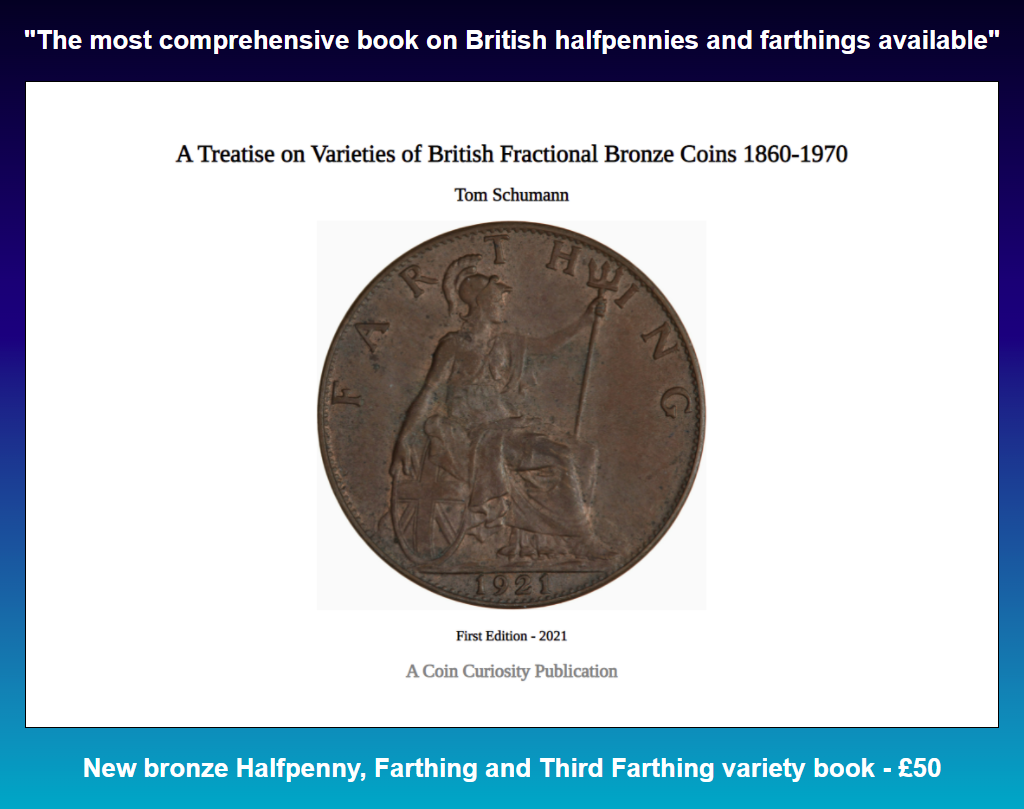1860 British Farthings
Bronze farthings were first struck in Great Britain in 1860, and while there were fewer problems with the new alloy than were experienced with the higher-denomination bronze coinage, there were still a number of iterations on the new obverse and reverse designs. There were three obverse and two reverse design used to strike circulating 1860 farthings.
| Die | Description |
|---|---|
| Obverse 1 | Beaded border, five berries in wreath |
| Obverse 2 | Toothed border, four berries in wreath |
| Obverse 3 | Toothed border, five berries in wreath |
| Reverse A | Beaded border |
| Reverse B | Toothed border |
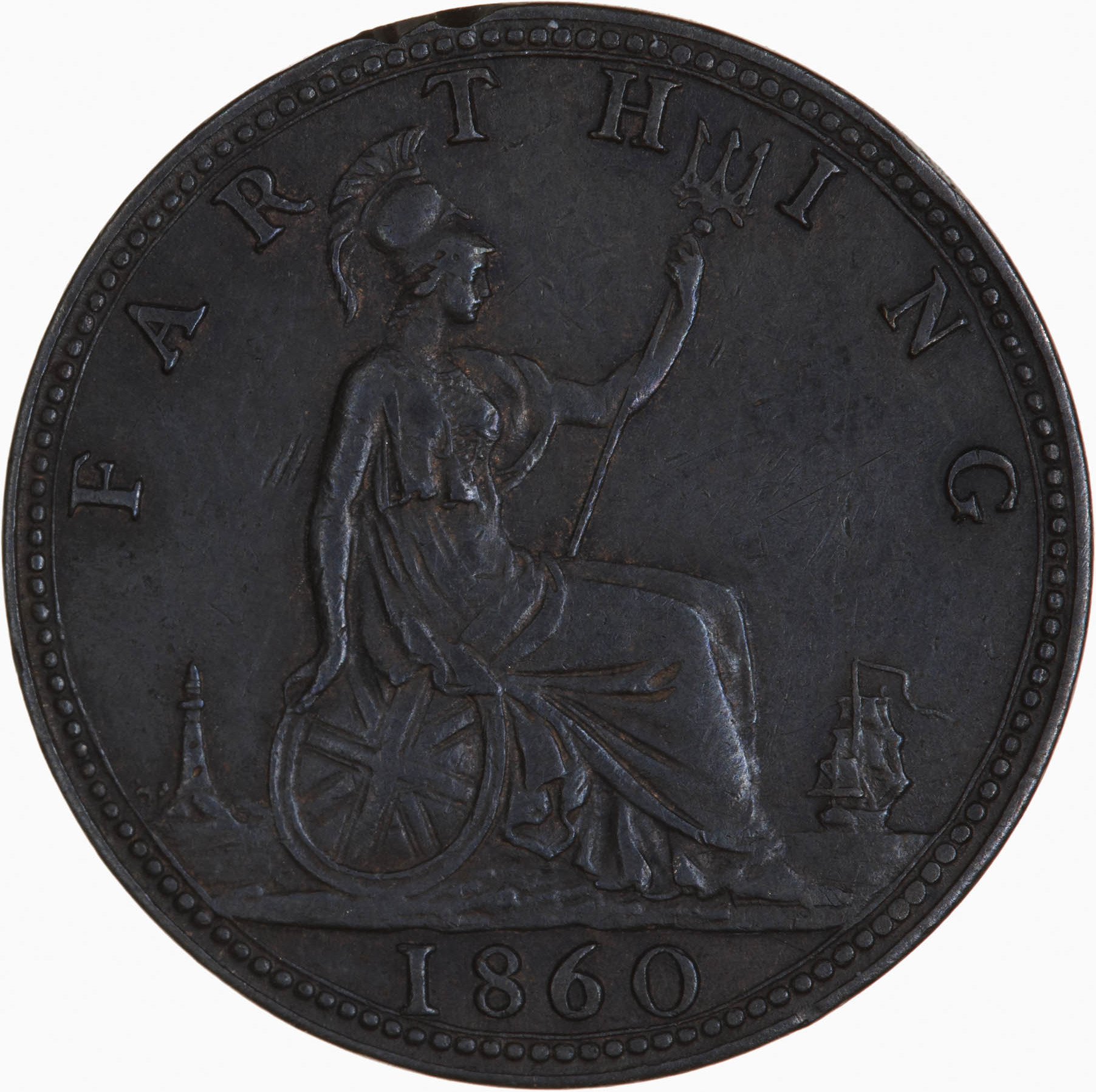
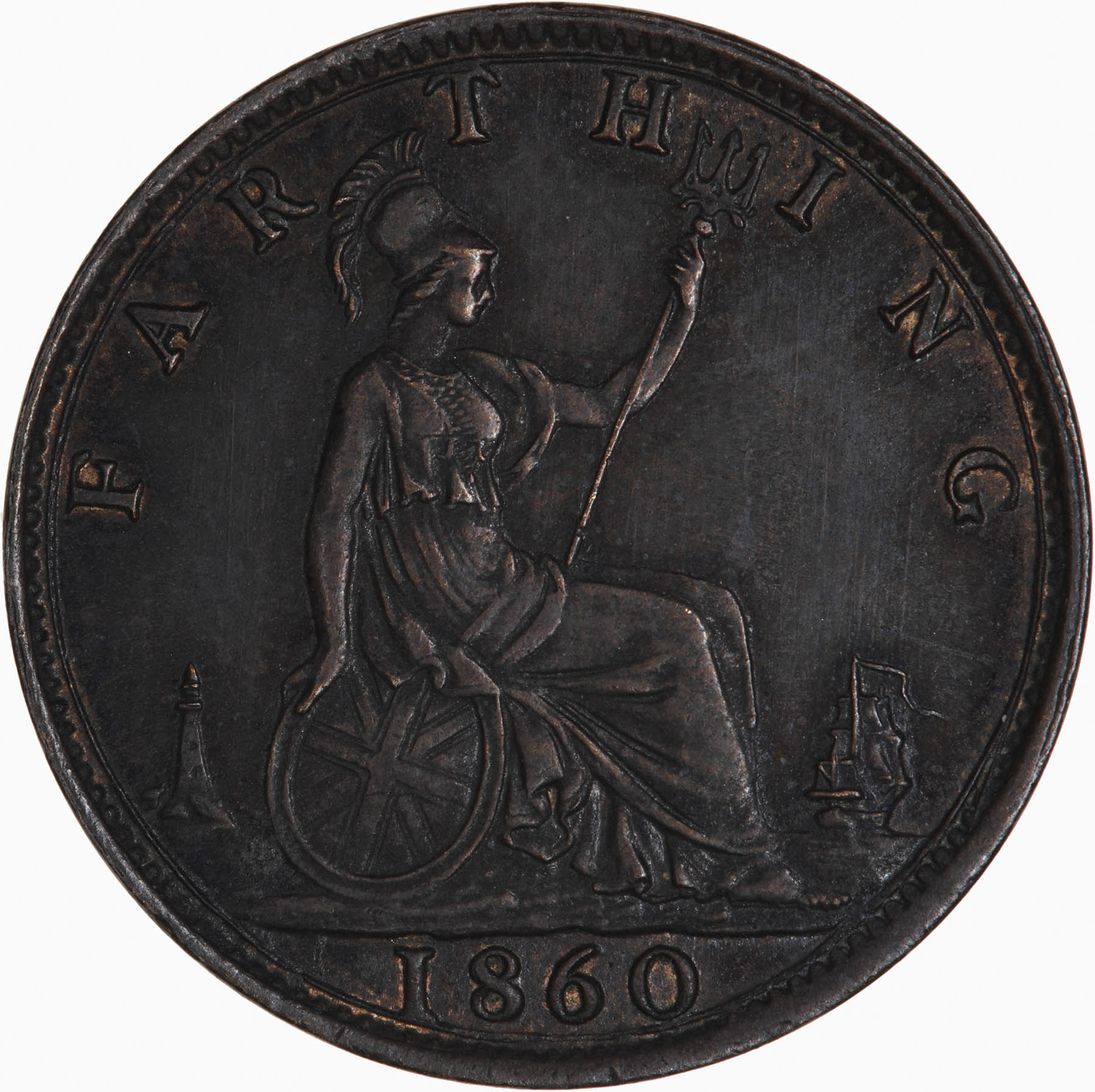
Although there were three obverse and two reverse dies, not all dies were paired with each other - the beaded border dies were phased out early on as the toothed border resulted in longer die life and hence higher output per die.
| Die pairing | Notes | Reference |
|---|---|---|
| 1+A | Common | Freeman 496 |
| 2+A | Rare - toothed/beaded border mule | Freeman 498 |
| 3+A | Very Rare - toothed/beaded border mule | |
| 2+B | Common | Freeman 499 |
| 3+B | Common | Freeman 501 |
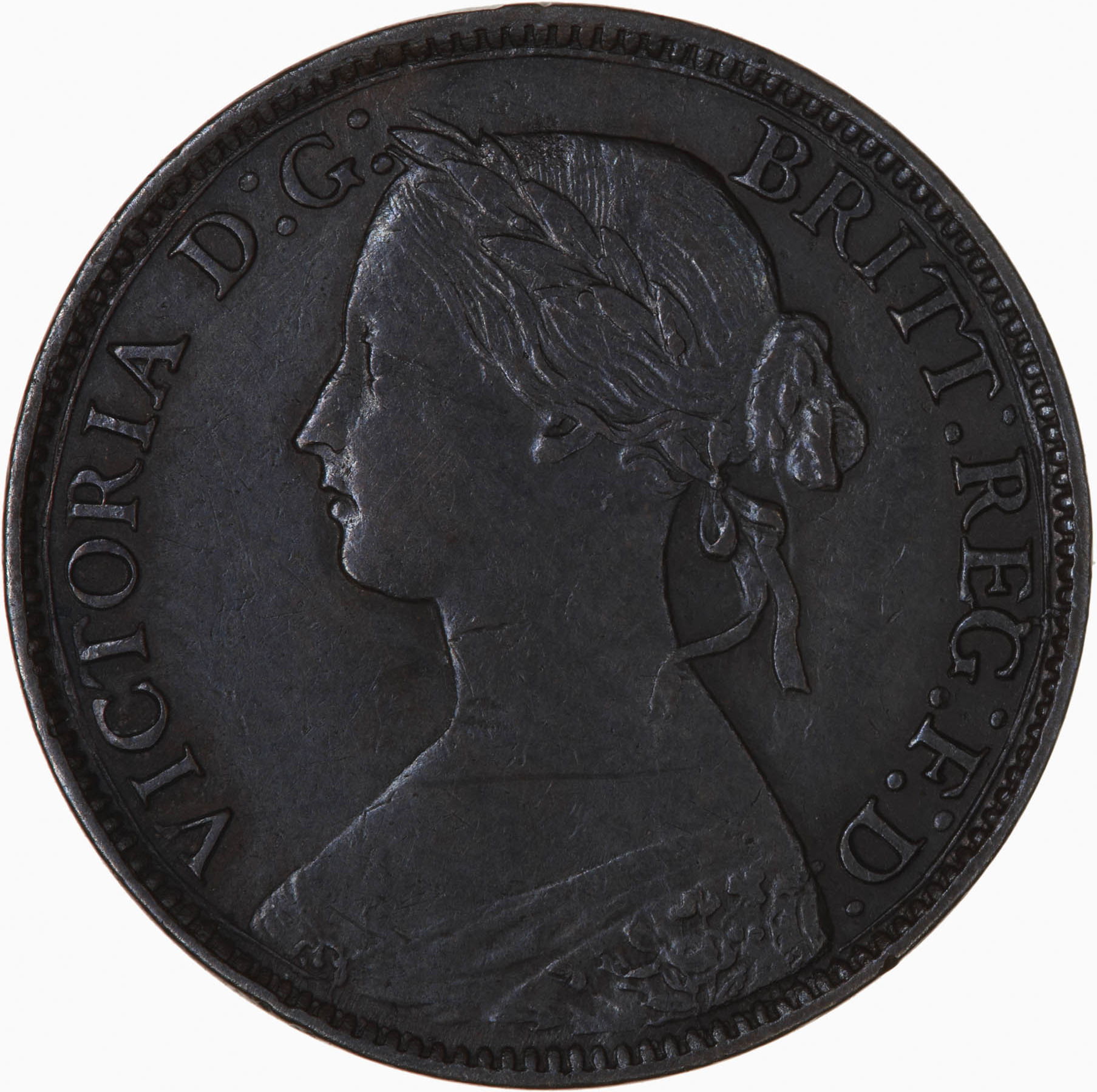
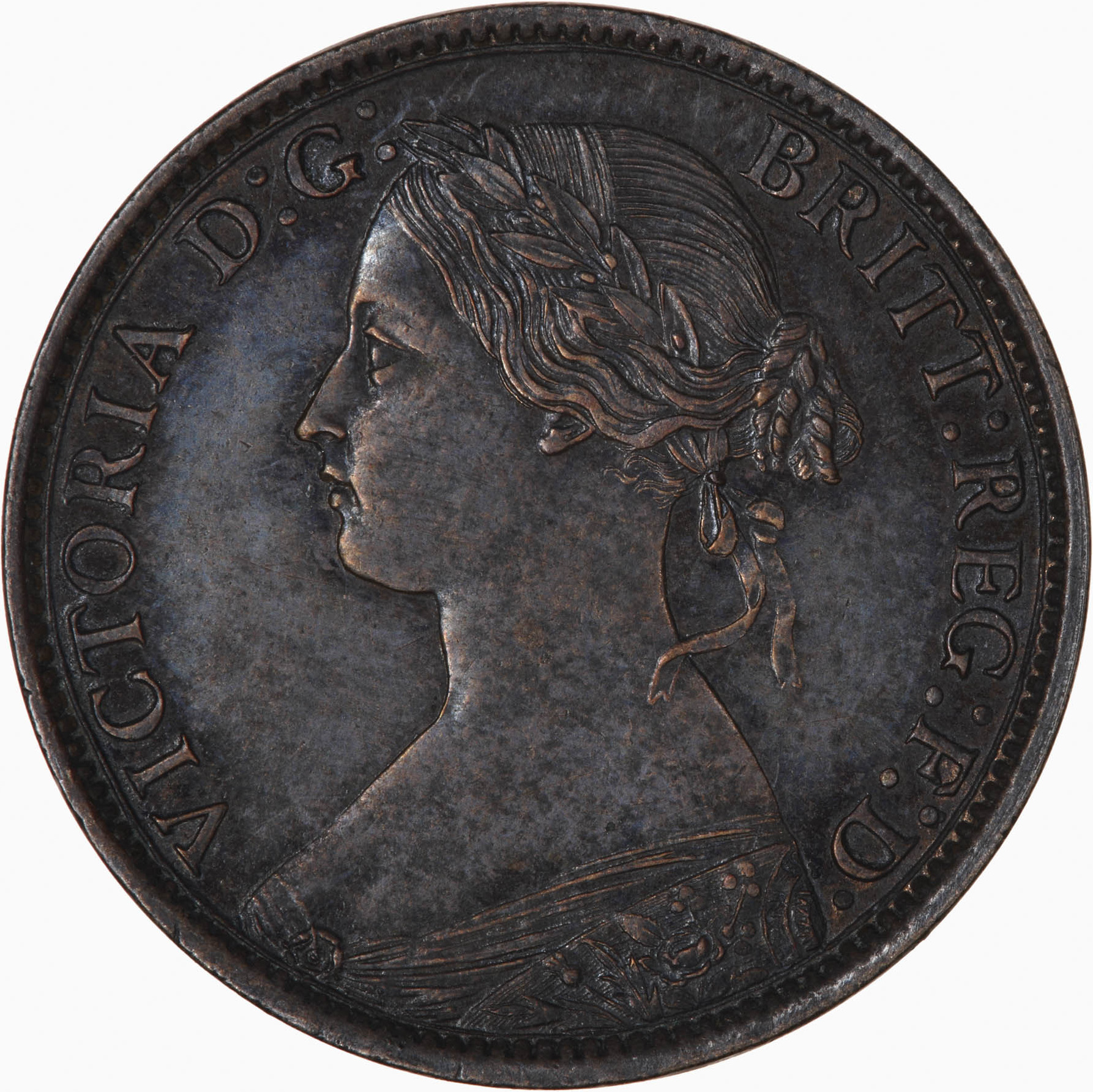
Most of the 1860 farthing varieties are easy enough to obtain - while rare, the 2+A toothed/beaded border mule is not impossible to obtain, with Freeman estimating there are 16-50 extant examples (p121, Freeman, The Bronze Coinage of Great Britain (1860-1970), 2016), though the true number is probably a little higher as more examples would have been discovered since Freeman's book was first published in 1970. The 3+A toothed/beaded border mule is a very rare coin however, so rare that Freeman did not record its existence at all. An example was sold in the Oxford Collection by Colin Cooke in 2008 as lot 140, which had previously been sold in Croydon Auctions in 2005. When the Mangahas Collection was sold by Spink in 1990 it was then one of two known 1860 3+A farthing mules (Cooke, https://www.colincooke.com/collections/oxford_vicbunhead.html).
More details about British bronze farthing and halfpenny varieties can be found in the new reference book A Treatise on Varieties of British Fractional Bronze 1860-1970.
Images provided by and Museum Victoria under Creative Commons Attribution 4.0 International

